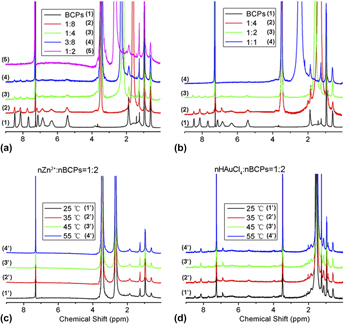Article contents
Metal-ions directed self-assembly of hybrid diblock copolymers
Published online by Cambridge University Press: 27 October 2014
Abstract

Novel hybrid diblock copolymers consisting of bidentate ligand-functionalized chains have been synthesized via click reaction and RAFT radical polymerization. The chemical structure and molecular weight of the synthesized poly(methacrylate-POSS)-block-poly(4-vinylbenzyl-2-pyridine-1H-1,2,3-triazole) (PMAPOSS-b-PVBPT) were characterized by NMR and GPC. The copolymers had been utilized to construct metal-containing polymer micelle by the metal–ligand coordination and electrostatic interaction in this study. The self-assembly behaviors of PMAPOSS-b-PVBPT in chloroform, a common solvent, under the effect of Zn(OTf)2 and HAuCl4 were investigated by TEM, DLS, and variable temperature NMR. Besides, micellization of this diblock copolymer was achieved in ethylene glycol, a selective solvent for PMAPOSS-b-PVBPT. The experimental results revealed that the incorporation of heterocyclic rings bearing nitrogen atoms in polymer side chains played an important role in the construction of metal-containing copolymer micelles. The prepared metal-containing PMAPOSS-b-PVBPT micelles had good dynamic and thermal stability due to the strong metal–ligand coordination interaction and electrostatic interaction.
- Type
- Articles
- Information
- Copyright
- Copyright © Materials Research Society 2014
References
REFERENCES
- 3
- Cited by




